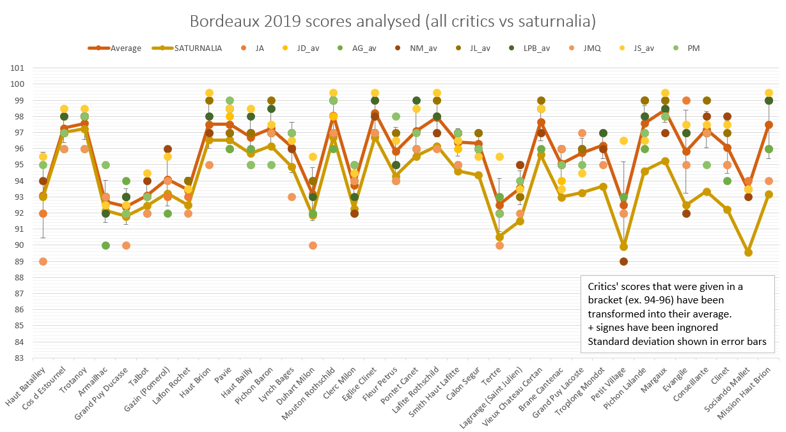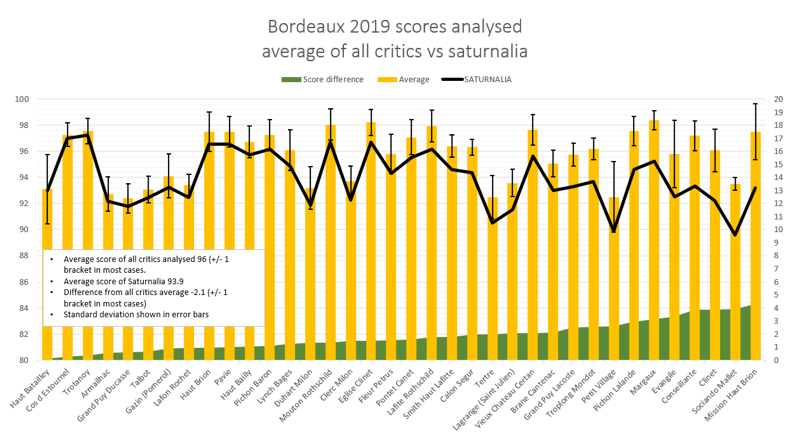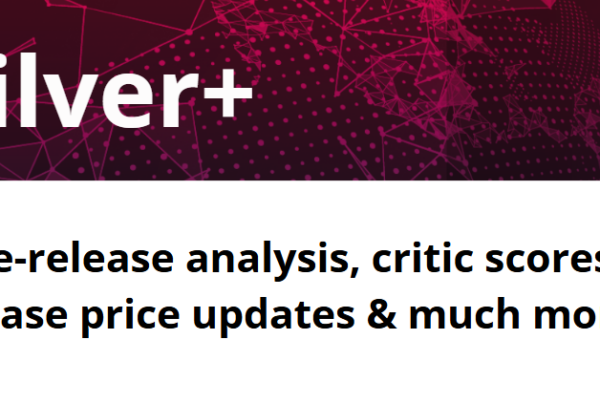The team behind Saturnalia, at Ticinum Aerospace, offer a different perspective on vineyards with the help of satellite data. They automatically collect, aggregate and process data with the aim of providing accurate early wine quality predictions, scores and price trends. They consider this approach to be a complimentary one, “that can be useful to navigate the uncertainty and make more informed decisions”. For the 2019 vintage they were able to predict and publish scores for a panel of 50 chateaux using their model, before tasting reports were published.
With all relevant critic scores now available, the chart below illustrates how the artificial intelligence scoring methodology from Saturnalia compares to the scores published by leading critics.
The analysis used a selection of 34 wines that were tasted by at least 3 or more of the main critics – Antonio Galloni (Vinous), Jane Anson (Decanter), Jeb Dunnuck (JebDunnuck.com), Jeff Leve (The Wine Cellar Insider), Jean-Marc Quarin (Quarin), James Suckling (JamesSuckling.com), Lisa Perrotti-Brown (Wine Advocate), Neal Martin (Vinous), Peter Moser (Falstaff).

Saturnalia took a more conservative approach to the vintage than most critics. They scored the vintage an average of 94.1 points, approximately two points lower than the average from the leading critics. Saturnalia scores best aligned with Jean-Marc Quarin and Antonio Galloni who both awarded the vintage 95 points on average. Neal Martin scored the vintage slightly higher, an average of 96.1.
The following chart shows the average of critic scores and Saturnalias predictions. Saturnalia predictions showed a difference falling between 0-4 points across the 34 wines. Saturnalia most accurately predicted the scores of Haut Batailley and Cos d’Estournel with Sociando Mallet and Mission Haut Brion proving the largest discrepancy.

The full report and access to all Saturnalia scores for the 2019 vintage can be found on their website.



